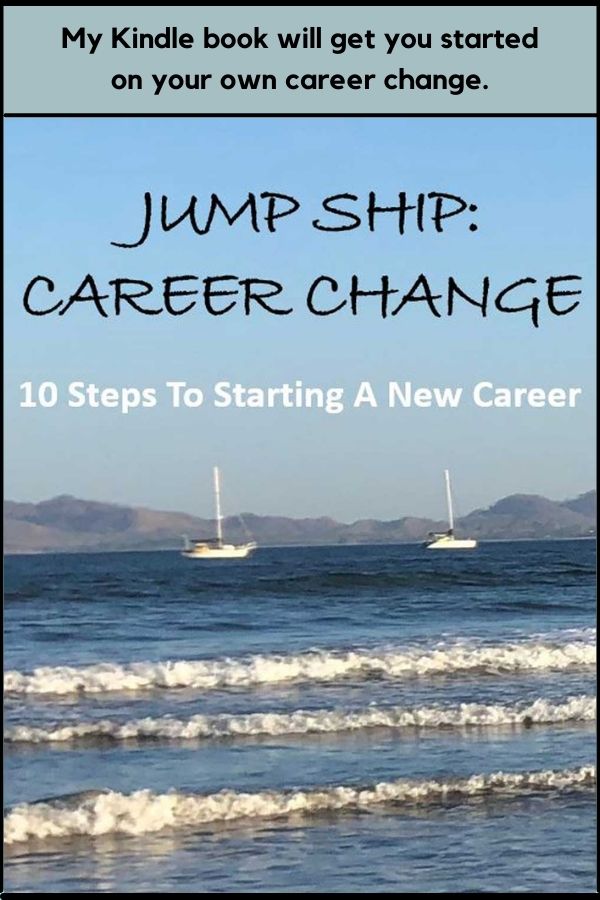In a recent survey of my readers, the overwhelming number one topic on their minds was how to figure out what to do in their career.
I hear from people just starting out who don’t have a clear career target – maybe a vague sense of their interests but not a clear way to translate these notions into an actual job. I hear from experienced professionals who long for something else, but have no idea what – just that it’s not what they’re doing now.
Does this questioning sense of “what’s next?” describe you?
If you are questioning what’s next, the good news is that there’s no one right answer for everybody, as the best career fit is custom-made job-by-job, project-by-project, connection-by-connection. The bad news too is that there’s no single answer you can point to and say, “Just do that!”.
To figure out what to do in your career, you need to experiment. Think of yourself like a researcher, only you’re researching yourself – what makes you tick, what makes you light up, your priorities and your interests.
Here are 10 exercises and prompts to get you started on that investigative journey:
1 – Do you need to do something about your career or some other area of your life? Wheel of Life
We spend a lot of time working so it makes sense that, if you’re unhappy, your job is a likely culprit. However, there are other areas of your life, such as your relationships, your personal interests, health, money, etc. that also have a significant impact on your well-being and may actually be the issues that need tend. The Wheel of Life is a popular coaching exercise that addresses this issue head-on.
Draw a circle and divide it into eight segments (like a pizza). Each segment is an area of your life, such as:
- Career
- Relationships
- Personal hobbies
- Health
- Money
- Environment
- Spiritual connection
- Community connection
You can do as few as six segments if you really don’t have eight priorities, or you might edit some – for example breaking relationships into significant other, family and friends separately (then you need to take out two other categories).
Rate your satisfaction in each segment from 1 to 10, where 1 is the center of the wheel and 10 goes out to the edge. If you score 5 in everything, your wheel is round and balanced but also small. If you score low in some and high in others (like most people), your wheel is unbalanced and you can see visually which areas need tending.
A career change is disruptive. It would be helpful to shore up some other areas first to give yourself a strong foundation to launch a big career breakthrough.
2 – What do you enjoy? 100 Dreams
Sometimes you’re so frustrated with your current career and you’re so used to just doing what you don’t enjoy, that you have forgotten what it feels like to enjoy yourself. Your compass is broken. Your passion muscle is weak from inactivity. You don’t have a good sense of anything that interests you.
In this case, trying to home in on your interests AND specifically professional interests is too big a leap. You just need to get that passion muscle moving again. My favorite exercise for this is 100 Dreams, where you brainstorm a list of everything you want to be, do and have. I created this exercise years ago, and it’s been picked up by other coaches and experts. One of my favorite productivity/ time management gurus, Laura Vanderkam, makes a new list of 100 Dreams each year and invites her community to come up with their own!
3 – Where do your natural interests take you? Table of Contents
In addition to 100 Dreams, another exercise you can do is to take stock of what you like to read.
If you’re too busy to read, that’s a shame…but for purposes of this exercise, browse the headlines on major media outlets, such as the Wall Street Journal, Fortune, Forbes, etc.
Don’t click through, or you might fritter away your whole day. Simply notice what catches your interest. Is it a specific industry? Are there companies that catch your attention? Are there people you like to read about – why? What are they doing? Is there a specific issue you continually gravitate to, such as turning a situation around or how people can collaborate better or improving some aspect of society?
When most reading was done with print publications, I called this the Table of Contents exercise because it entailed going to a well-stocked library and glancing at the Table of Contents for as many diverse publications as you could. I recommend business and hard news publications, or in these days websites, because you’re trying to find interests that might translate to a career, rather than a hobby.
4 – What problems do you like to solve? Peak experiences, go-to skills and dig-deep moments
The Table of Contents exercise can reveal the problems you like to solve, as you notice which issues you like to read about.
In addition, here are some prompts that can also help you uncover what you really like to do:
Revisit peak experiences in your past – go back to even childhood. What were you doing? Who were you working with (or were you working solo)? What role did you play? What skills did you use – e.g., analysis, organizing, research, creating, working with your hands? Was the activity structured or unstructured? Indoors or outdoors? Notice as much as you can because these reveal your preferences.
Things that come easily and naturally to you might also reveal skills and expertise you could mine for your next career. When I do reference checks, I ask the reference to tell me what the candidate is the “go-to person” for. What are you the go-to person for? What information or advice do people always come to you for? It might not be knowledge, but it could be a quality you have – like you’re the person who makes people laugh or who motivates when things go wrong.
Finally, think about those dig-deep moments, where you pressed on and succeeded despite challenges and setbacks. What inspired you to finish? What were you doing? What environment were you in? What were the stakes? These might yield clues to where, when, how and why you do your best work.
5 – Who do you like to work with (if anyone)? Prompts to uncover the ideal colleagues
As you think about past experiences, here are some questions to revisit about your favorite projects and roles to help you home in on who you should surround yourself with (or not):
- Did you work solo or in a team? Is it a mix – what ratio?
- Did you lead, partner or follow? Is it a mix – what ratio?
- Did you socialize with colleagues, or was it mostly business?
- Were you working with customers, media or other people outside the department or team?
- What kind of management did you have? Do you need or want coaching and mentorship on the job?
6 – How do you like to work? Prompts to uncover the ideal work environment
Again revisiting your favorite projects or roles, what was the nature of the work:
- Was it structured with a clear plan and schedule, or more spontaneous?
- Was the company big, small or medium; global, local or regional; established or new?
- How would you describe your favorite company culture – what was it that made it such a good fit?
7 – What feels right when you go just one step further? Crawl, before you jump
While brainstorming and giving your imagination room to run is important, it can also lead to too many ideas and analysis paralysis.
A good guard rail against this is to take just one interest you have – it doesn’t have to be a career-related one – and pursue it one step further. In fact, think about inching forward or crawling, not even stepping and certainly not jumping. Doing too much too soon just puts undue pressure. We’re still experimenting!
When I was miserable at a very demanding job that had me in the office late at night and often on weekends, I was too burnt out to go deep in any other activity but work. Still, I signed up for a four-week sewing class. I had always wanted to sew, and I took just one small step in that direction. Turns out, I hated sewing, but it did let me forget about work for a bit. It showed me that I do have the time to do at least a little bit of leisure activity. When the sewing class thankfully ended, I just replaced the time doing something else – I read a lot of books, attended talks, and took an acting class (that was a winner!).
I didn’t make a career move out of that job for almost two years. But the small steps I did take in the beginning got me going and gave me enough structure that the momentum snowballed and helped me along, when self-motivation wouldn’t have been enough. This also included small steps that went nowhere, like sewing. Experimenting and finding out what you don’t like is also useful in triangulating what you do like.
8 – How can you go broad and deep? Spinning Plates
Taking one small step is a big enough step to start, but a career move –landing a new job, starting a business – will require multiple steps. You also will need to pursue multiple avenues simultaneously. For example, the job seeker should always have more than one company in play. The entrepreneur needs to prospect more than one client.
If you try to do too much too soon, you won’t get traction anywhere, and you’ll get frustrated by the lack of progress. You also might devolve into a confused, disorganized mess. Instead, model your activity after the circus performer spinning plates. They don’t just hurl all plates in the air simultaneously and get them all spinning under control. Instead, they start one and once that gets going, they start another one. They may have to nurture the first one, but then they start a third one. Go back to one and two, then start a fourth plate spinning.
Similarly, pursue one idea one step further, maybe even two or three steps, till it has some momentum, and the progress will keep you going. Only then, add another idea you want to test, and get that going, while maintaining progress on the first. At that point, you have two ideas you’re toying with – perhaps two companies or industries you have researched or two skills you’re developing – and then you can add more and more activity.
9 – What are your deal-breakers? Decision Factors
Your career is just about your activity on the job, so homing in on your interests, while very important, is incomplete. There are many other aspects to a career, such as compensation, lifestyle, challenge, work environment, colleagues, etc. There are so many factors, in fact, that too many professionals don’t take the time to rank order these. Sure, they’re all important, but some are more important than others. What factors do you consider when you decide that a job is a good career step or that a job offer is favorable or that a risk is worthwhile?
I list 40 decision factors to consider here, but it’s not meant to be comprehensive, and not every factor will be relevant to you. The real exercise is to:
- Brainstorm all the factors you might consider about a job and the offer;
- From all of these, pick your top half;
- From that short list, cut it in half again;
- Keep cutting, until you get to the handful (there should be just 1-3) of factors that you absolutely will not compromise on.
These are your deal-breakers.
When you pursue interests, let your imagination go wild. But when it comes down to vetting a project to commit to, (even if it’s a temporary one or volunteer) review your deal-breakers and honestly assess what is worth your while.
If you don’t decide your deal-breakers in advance, you may fall prey to Bright, Shiny Object syndrome, and say Yes to something you really should decline.
10 – Set a deadline to take that one small step
Setting a deadline for when you’ll stop experimenting and start taking the one step forward and then go broad and deep (i.e., spinning plates) is critical to ensuring that your exploration actually leads somewhere and not just to more exploration.
We’re not talking about a deadline for accepting a new job, just a deadline for the very next step and then the next after that.
I recommend a quick deadline – two to four weeks – to pick something and get started with it. Action clarifies more quickly and effectively than more thinking. Doing something beats reading about it.
Furthermore, a job search has multiple steps (watch my Land A Job You Love webinar to review the nine key steps). So the exploration phase is just one leg of the journey. Start now!





